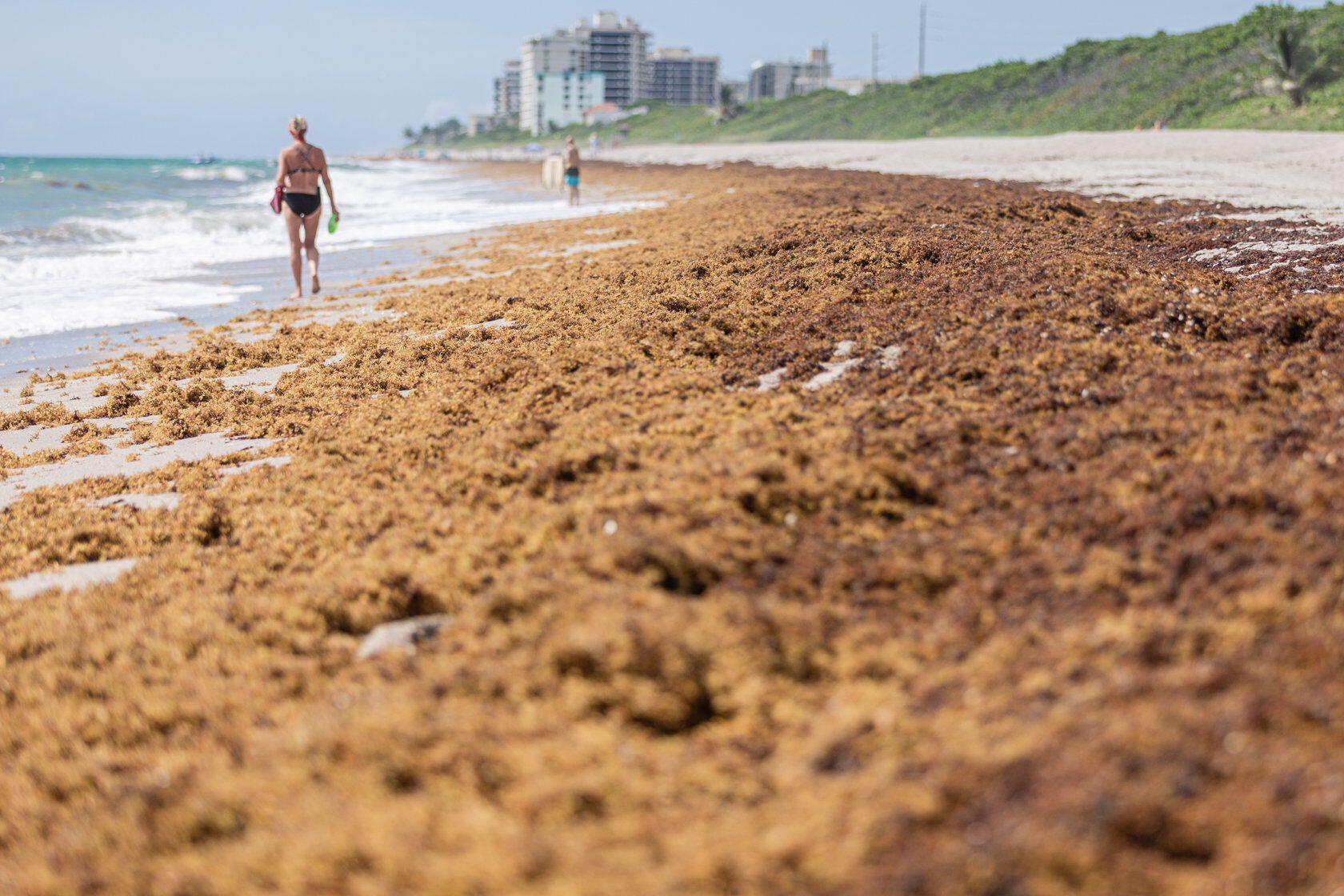
A loose raft of brown seaweed spanning about twice the width of the U.S. is inching across the Caribbean. Currently, bucketloads of the buoyant algae are washing up on beaches on the eastern coast of Florida earlier in the year than usual, raising scientists’ concerns for what coming months will bring.
The seaweed is made up of algal species in the genus Sargassum. These species grow as a mat of glops of algae that stay afloat via little air-filled sacs attached to leafy structures. The algae form a belt between the Caribbean and West Africa in the Sargasso Sea in the North Atlantic Ocean and then ride the currents west. Scientists say that reports of a massive blob of seaweed slamming into coastlines are overblown because the Sargassum algae are scattered across the ocean, and much of the seaweed will never reach the coast’s sandy shores. But in recent years researchers have generally seen larger so-called Sargassum blooms. And once the seaweed begins washing up on beaches and rotting, it can cause serious problems, local communities say.
Among annual Sargassum censuses in the Atlantic Ocean, “2018 was the record year, and we’ve had several big years since,” says Brian Lapointe, an oceanographer at Florida Atlantic University, who has studied seaweed for decades. “This is the new normal, and we’re going to have to adapt to it.”
The seaweed “blob” has been dubbed the Great Atlantic Sargassum Belt, and though it’s sprawling, the algae in the belt cover only about 0.1 percent of the water’s surface, says Chuanmin Hu, an oceanographer at the University of South Florida, who has used satellites to study Sargassum for nearly 20 years.
Hu and his colleagues use data collected by NASA satellites, including Terra and Aqua, to estimate the total mass of Sargassum in the Atlantic every month, tracking a yearly cycle that typically peaks in June. Last year the seaweed broke the record for the highest amount ever recorded in the Atlantic, with some 22 million metric tons of the stuff found across the ocean, according to the team’s calculations.
Hu says the team estimated that the Atlantic contained about six million metric tons of Sargassum in February and that he’s confident March’s mass will be higher. “This month there should be more. There’s no doubt,” Hu says. “Even in the first two weeks, I have seen increased amounts.”
In the ocean, Hu says, the Sargassum is crucial habitat for fish and turtles, among other marine life. He calls the belt a “moving ecosystem.” And just a small portion of the seaweed present in the Atlantic will ever wash up on beaches, Hu adds.
But beaches in Fort Lauderdale and the Florida Keys are already reporting Sargassum deposits this year, Lapointe says, and it’s on beaches that the seaweed can be problematic. There, he says, the algae rot and release chemicals such as hydrogen sulfide gas, which smells like rotten eggs. When inhaled, the gas can also cause headaches and irritate a person’s eyes, nose and throat. People with asthma or other breathing problems may be more sensitive to the effect, according to the Florida Department of Health. The seaweed’s early arrival is raising concerns about what this summer might bring.
“This is pretty early in the Sargassum season to see that much coming in, so I think that’s also fueling some of the concern about what’s to come,” Lapointe says.
Hu says that Sargassum amounts can’t be forecast more than two or three months out, so this year’s seasonal peak in the summer is still too distant to predict. Researchers have expected this year might turn out to be heavy in seaweed, however, because even the winter lull saw higher amounts of the stuff than average.
And the Atlantic has been reliably producing much more Sargassum in recent decades than it has historically. Lapointe says that the high Sargassum levels of recent years are likely in part tied to nutrient-rich water running off land into rivers and out to the oceans, where it can fertilize the seaweed. But understanding and addressing the problem remains knotty, he adds.
“This has been going for over 10 years now, and we haven’t made a whole lot of progress in better understanding of all these nutrient and climate drivers,” he says. “It’s something we’re working on as scientists.”
